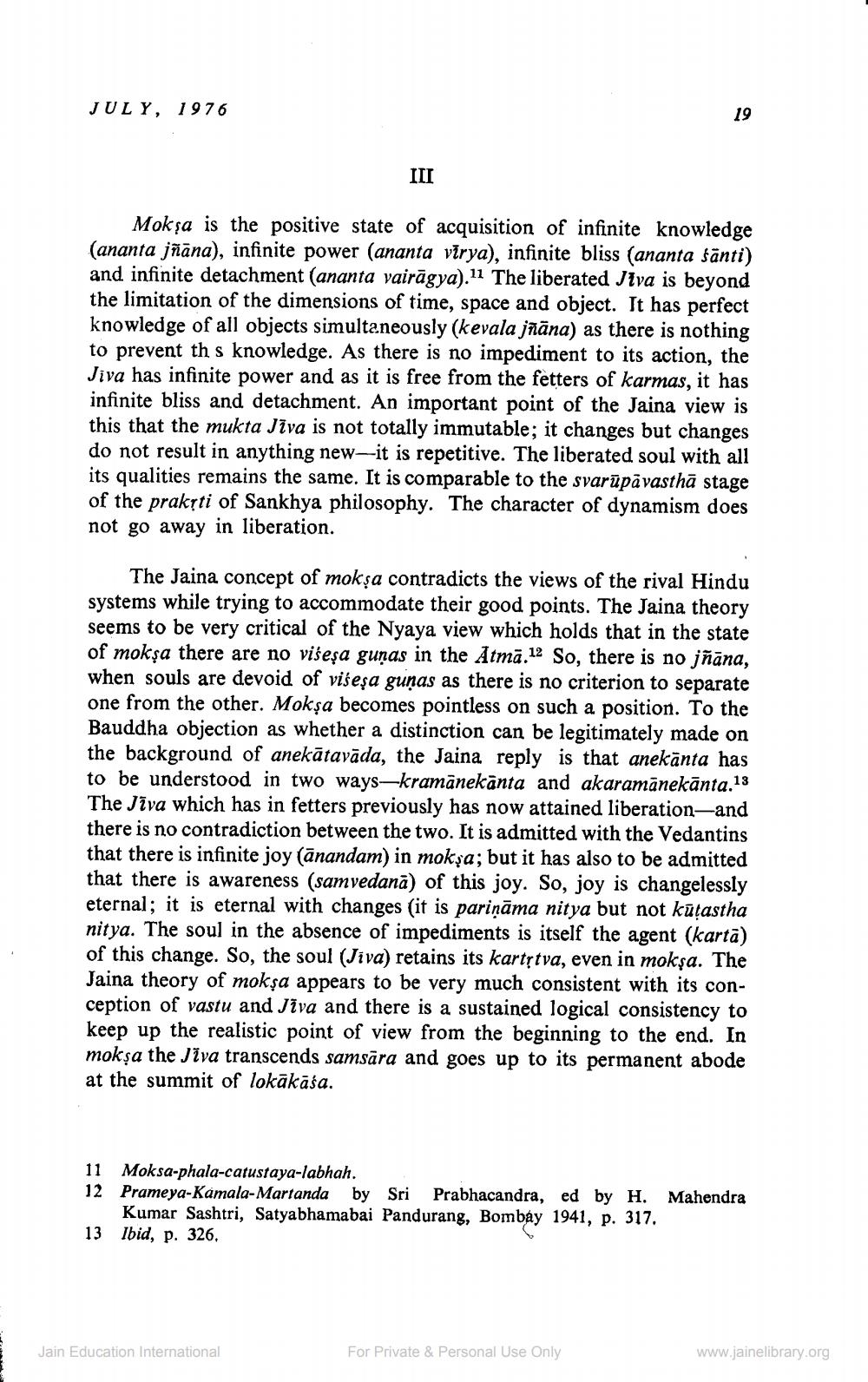________________
JULY, 1976
III
Mok şa is the positive state of acquisition of infinite knowledge (ananta jñāna), infinite power (ananta vīrya), infinite bliss (ananta śānti) and infinite detachment (ananta vairāgya).11 The liberated Jiva is beyond the limitation of the dimensions of time, space and object. It has perfect knowledge of all objects simultaneously (kevala jñāna) as there is nothing to prevent ths knowledge. As there is no impediment to its action, the Jiva has infinite power and as it is free from the fetters of karmas, it has infinite bliss and detachment. An important point of the Jaina view is this that the mukta Jiva is not totally immutable; it changes but changes do not result in anything new-it is repetitive. The liberated soul with all its qualities remains the same. It is comparable to the svarūpāvasthā stage of the prakrti of Sankhya philosophy. The character of dynamism does not go away in liberation.
The Jaina concept of mokşa contradicts the views of the rival Hindu systems while trying to accommodate their good points. The Jaina theory seems to be very critical of the Nyaya view which holds that in the state of moksa there are no višeşa gunas in the Atmā.12 So, there is no jñāna, when souls are devoid of višeşa guņas as there is no criterion to separate one from the other. Mokşa becomes pointless on such a position. To the Bauddha objection as whether a distinction can be legitimately made on the background of anekātavāda, the Jaina reply is that anekānta has to be understood in two ways-kramānekānta and akaramānekānta.13 The Jīva which has in fetters previously has now attained liberation and there is no contradiction between the two. It is admitted with the Vedantins that there is infinite joy (ānandam) in mokşa; but it has also to be admitted that there is awareness (samvedanā) of this joy. So, joy is changelessly eternal; it is eternal with changes (it is pariņāma nitya but not kūtastha nitya. The soul in the absence of impediments is itself the agent (kartā) of this change. So, the soul (Jiva) retains its kartstva, even in mokşa. The Jaina theory of mokşa appears to be very much consistent with its conception of vastu and Jiva and there is a sustained logical consistency to keep up the realistic point of view from the beginning to the end. In mokṣa the Jiva transcends samsāra and goes up to its permanent abode at the summit of lokākāśa.
11 Moksa-phala-catustaya-labhah. 12 Prameya-Kamala-Martanda by Sri Prabhacandra, ed by H. Mahendra
Kumar Sashtri, Satyabhamabai Pandurang, Bombay 1941, p. 317. 13 Ibid, p. 326.
Jain Education International
For Private & Personal Use Only
www.jainelibrary.org




